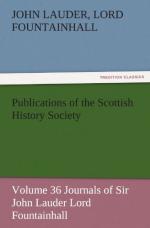In 1633 George Foulis, master coiner, says in a memorial, ’In the first it is to be considerit that the most pairt of the moneys presently in Scotland is only dollouris.
’Secondlie, these dollouris are not all alike in wecht, some wheirof are 15 drops wecht, some 14-1/2 and many others lesser in wecht.
’Thirdlie, they are different in fineness, some 10, some 10-1/2, others baser. The best 15 drop and 10 1/2 fineness will not answer to the King’s money in wecht or fynness to 54s. Scots.’
The best of these dollars was the Rex or Rix Dollar (Reichsthaler, dalle imporiale). In the reign of Charles I. the baser dollars which gave most trouble to the authorities were the dog dollars and the cross dollars. In the reign of Charles II. we hear more of the leg dollar, which approached the rex dollar in value, and had got a pretty strong footing.
On 14th January 1670, the Privy Council issued a proclamation on the narrative, ’Forasmuch as there hath been of late imported into this kingdom great numbers of those dollars commonly called leg dollars Haveing the impression of a man in armes with one leg and a shield ... covering the other leg ... which does usually pass at the rate of 58s. Scots money, and seeing that upon tryall of the intrinsick worth and value thereof they are found to fall short of the foresaid rate, and that in the United Provinces where the forsaid dollars are coyned, the passe only at the rate of crosse dollars, Therupon the King’s Mtie with advice of his P.Cs. doth declare that (the rex or bank dollars now passing at 58s. Scotts) the true and just value at which the forsaids legs dollars ought to passe and be current in this kingdome is 56s. Scotts money....’
Thus we get the authorised value of these dollars at the period of Lauder’s accounts. The accounts themselves show that the current value varied indefinitely, and is sometimes different in two consecutive items.[38]




